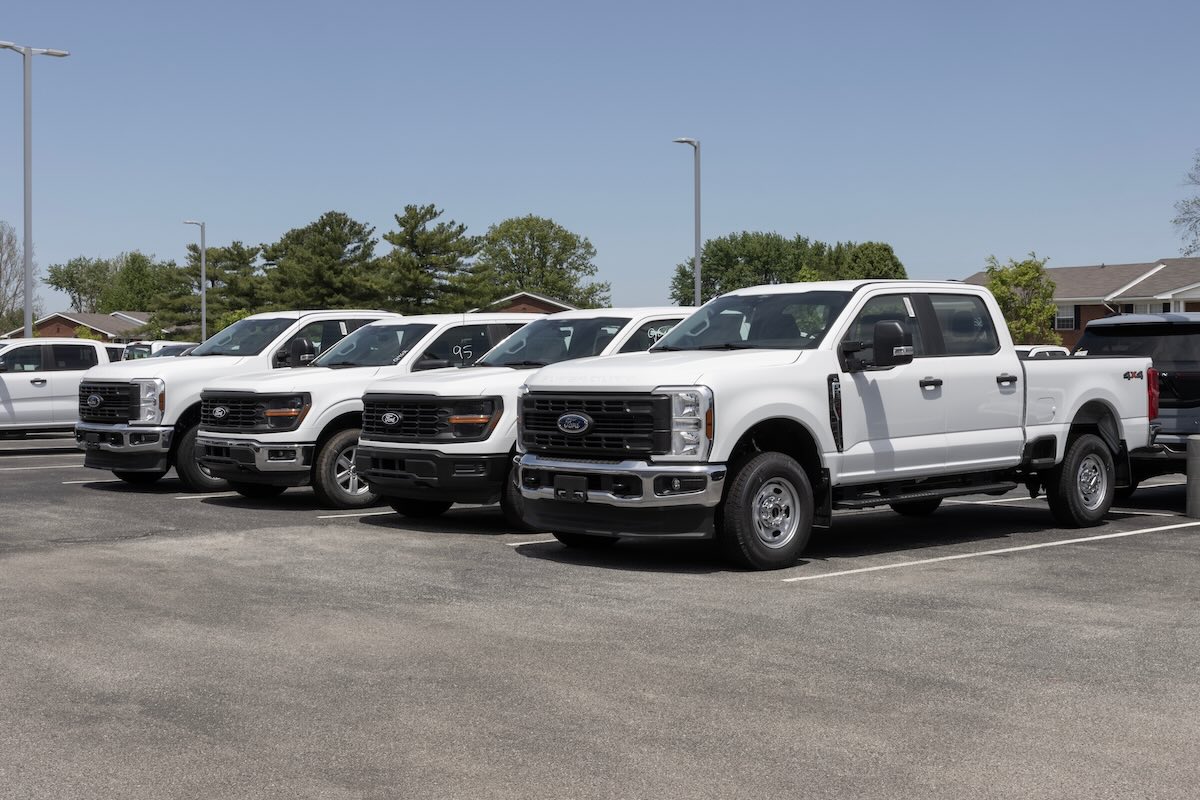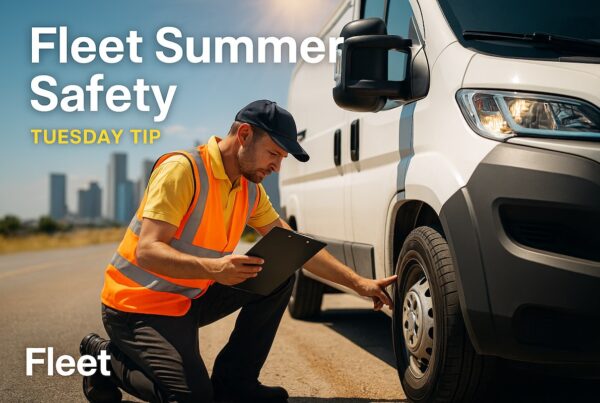Greetings, Fleet Keepers of the Keys,
“What Kind of Fleet Vehicle Do You Drive?!”
Fleet vehicle safety is more than just a checklist, it’s about understanding how different vehicles behave, where their risks lie, and how to apply defensive driving techniques tailored to each one.
🎶 “I like big trucks and I cannot lie…” Okay, maybe that’s not quite how the song goes, but in fleet driver training, the kind of vehicle you drive absolutely matters. From hulking F350s to zippy golf carts, different vehicles come with different risks, blind spots, handling quirks, and behavior-based hazards.
Whether you’re maneuvering through city streets in a cargo van, towing a trailer in a long-bed pickup, or zipping between buildings on a corporate campus, your defensive driving strategy should match your fleet ride.
Let’s take a look at some of the most common fleet vehicle types, each with safety tips tailored to its unique risks, plus a bonus fact for good measure. Because knowledge should be both fun, fleet ready, and worth the ride!
🚛 Ford F250/F350 (High-Profile Trucks)
These Super Duty beasts are built for work, and demand respect on the road. Their heavy frames, extended wheelbases, and elevated centers of gravity make them powerful but also uniquely vulnerable.
🔹 Tip 1: Do not rely solely on mirrors. Use deliberate head checks before changing lanes, especially when towing. These trucks have large blind zones and limited rear visibility.
🔹 Tip 2: Brake early. These trucks need significantly more stopping distance when loaded. Slowing in advance is not just smart, it is SAFER.
💡 Bonus Fact: The Ford F-Series has been the best-selling truck line in America for over 40 years. It is the unofficial mascot of the American jobsite.
📦 Cargo Vans (Think Sprinter, Transit, or Express Van)
These rectangular road rulers often carry tools, equipment, and deliveries. With limited windows and shifting loads, they pose unique challenges even for experienced drivers.
🔹 Tip 1: Always tie down cargo. Unsecured gear becomes a projectile in sudden stops and can compromise van and high profile vehicle stability.
🔹 Tip 2: Mirror discipline is everything. Install wide-angle mirrors if possible and use them religiously, blind spots are real and ruthless.
💡 Bonus Fact: A fully loaded cargo van can weigh over 9,000 lbs, almost as heavy as a school bus full of kids. Driving it responsibly helps make sure those kids and their big yellow ride stay safe, too.
🏌️ Golf Carts & Utility Vehicles
They may look harmless, but these mini machines are involved in thousands of serious incidents each year, particularly on campuses and business parks.
🔹 Tip 1: Only operate on authorized paths. Roads meant for cars are not meant for golf carts, though they sometimes now share space. Visibility, speed differentials, and distracted drivers pose major risks.
🔹 Tip 2: Make turns slowly and warn passengers to stay seated. High-speed turns and bumpy surfaces lead to ejections and rollovers.
💡 Bonus Fact: According to the CDC, over 13,000 golf cart-related injuries require emergency care in the U.S. every year, and not just on golf courses as their use becomes more common in fleet operations.
🚐 12- and 15-Passenger Vans
These vehicles are often used by schools, parks, and companies transporting work crews. They can feel like a hybrid between a bus and a van, and they drive like neither.
🔹 Tip 1: Distribute weight evenly and avoid loading cargo on the roof. These vans are prone to rollovers, especially during evasive maneuvers.
🔹 Tip 2: Triple your following distance. The combination of weight and passenger load increases braking time dramatically.
💡 Bonus Fact: The NHTSA has issued multiple safety alerts specifically about 15-passenger vans. Overloading just one tire position can increase crash risk significantly.
🛻 Light-Duty Pickup Trucks (Tacoma, F150, Silverado 1500, etc.)
These everyday workhorses are deceptively easy to drive, until you add payload, uneven weight distribution, or towing.
🔹 Tip 1: Never drive with unsecured tools or materials in the bed. A loose hammer becomes a highway hazard at 60 mph.
🔹 Tip 2: Understand your GVWR (Gross Vehicle Weight Rating) and towing limits. Exceeding them is not only unsafe, it is against the law.
💡 Bonus Fact: The average pickup truck bed can hold up to 2,000 lbs, but that does not mean you should test it with concrete blocks and wishful thinking.
The Bottom Line:
Fleet vehicle safety means equipping drivers with the right knowledge for the right vehicle, because the risks of a cargo van are not the same as those of a golf cart.
At NTSI, we help organizations raise their fleet vehicle safety standards with behavior-based, vehicle-specific training. Because no matter what’s parked in your lot, one thing stays the same: SAFER is always the right road.
No matter your fleet size, or what is parked in it, we train drivers to be Safer, Aware, Focused, Educated, and Responsible. 📢 Fleet Managers: Ready to match your driver training to your actual fleet vehicles? Let us help you turn that ignition key into a culture ignition switch, and find out what SAFER can mean for your fleet.





